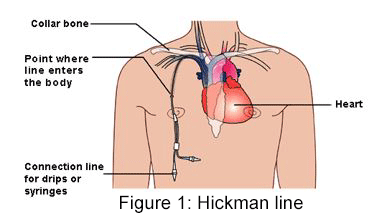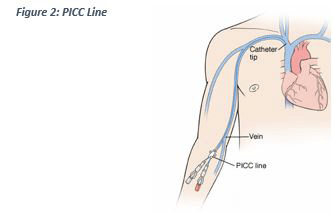Hypnosis for Cancer Patients: Part 1
by Ronald Shone, B.Sc., M.A., B.Sc. (Psych), DCH
uploaded 1/11/2016
Introduction
Cancer occurs when structurally abnormal cells begin to divide rapidly and form a tumour. They fail to carry out their normal function and can spread rapidly via the blood and lymphatic system. Malignant tumours produce substances that break down other tissues, so preventing them from being separated surgically from the tissues they infiltrate. A primary tumour will continue to grow because of rapid cell division, but then break into other organs of the body by breaching the walls of blood vessels, lymphatic vessels and other organs. These breaches can cause secondary cancers in the parts of the body they spread to. For example, bowel cancer with a tumour in the large intestine can readily spread to the liver – a process called metastasis. This is because the blood vessels of the bowel travel from there to the liver for processing and digestion.
Cancer, in its many forms, is on the increase. It can affect both the old and the young; women, men and children. There has been considerable progress in the use of drugs, which has prolonged patients’ lives. But there is now a realisation that extending life must be balanced against the quality of that extended life.
When a patient is diagnosed with cancer they are usually offered a combination of surgery, chemotherapy and radiotherapy. Chemotherapy is the most common, and the one we shall focus on here. Chemotherapy itself can take two forms. First, treatment that is general and influences both the cancerous cells as well as the ‘good’ cells. This is a cytotoxic treatment. Second, there are drugs that can target just the cancerous cells, but this is not possible in all forms of cancer. So the main chemotherapy treatment is a cytotoxic one. Again, here we shall focus purely on cytotoxic chemotherapy.
A personal note
The hypnotic treatment discussed in this article is based on my own diagnosis of cancer. Following a holiday to Italy where I had a bad bout of bronchitis, which left me breathless and very fatigued, I returned home still with a problem of breathlessness. An X-Ray indicated my lungs were clear, and two blood samples revealed that I had a very low red blood count and lacked iron – both of which are needed for the blood to carry oxygen around my body. I was diagnosed with anaemia. The GP was not sure why I had anaemia and so I was referred to the hospital on a fast tract. I did not know at this point that he suspected cancer – something doctors prefer not to mention until they are sure! I was put through a number of tests, including an upper endoscopy, a colonoscopy, a CT colonoscopy (required since I had a twist in my colon that prevented the endoscope from going all the way around the colon) and a liver biopsy. Following these tests, I was diagnosed with cancer of the bowel – of which I was informed on the day of my 70th birthday! The prognosis was not good. No operation was possible because the cancer had spread too widely to my liver. Without chemotherapy I had just a few months to live. The cancer was non-operable, with chemotherapy life would be extended, but for how long was an unknown factor.
Other than no treatment, three versions of chemotherapy were offered, each with different side effects and success rates. The first just involved tablets, with a 50% success rate. The second involved tablets and drugs. However, the drugs had permanent side effects that lasted after the treatment – such as numbness in the hands and feet. This had a 60% success rate. The third also involved tablets and drugs, but the drugs had stronger side effects during treatment, but these did not extend into later life. This too has a 60% success rate. The options were an attempt by oncologists to present patients with a choice between quantity and quality of life.
I immediately went for the third option, including an immediate implant in my chest of a Hickman line. The medical profession has always had difficulty extracting blood out of me – sometimes up to four attempts! The Hickman line gets around this problem, but not everyone would welcome an insertion into their chest that involved two dangling tubes: allowing drugs to be pumped into the body and for taking blood samples out of the body. The Hickman line is an alternative to a catheter in the arm, and involves less time spent in the hospital, because the pump attached to the Hickman line can pump the drugs continuously over a two-day period, following the visit at the hospital for the chemotherapy treatment.
Complementary therapies are offered at the oncology unit where I was being treated (Larbert Royal Hospital in Scotland), and usually provided by the Macmillan Cancer Support. Interestingly, the list of alternative complementary therapies that I was offered did not include hypnotherapy. Whether hypnotherapy is less thought of, or whether they had no hypnotherapist, I am not sure. But hypnotherapy has much, much to offer cancer patients. So this article presents my personal approach in using self-hypnosis in dealing with all aspects of the treatment.
The purpose of this article is not simply to utilise self-hypnosis, but rather to take some responsibility in one’s own cancer treatment. The affirmations presented here do not require you to be in hypnosis. What is required is that they are constantly repeated, believed in, and are accompanied by an expectation of success. Even so, having the suggestions presented in a state of hypnosis makes them much more powerful. Although directed here in part for bowel cancer, the material can readily be adapted by a hypnotherapist to deal with other forms of cancer, e.g., breast cancer, pancreatic cancer, and may others.
A breakdown of the hypnotherapy approach
There are various aspects to cancer, each of which requires specialist suggestions. Following my personal diagnosis, I broke down the approach into the following groups:
- Preliminary affirmations, e.g. anaemia, Hickman line and needle phobia
- Cancer and chemotherapy affirmations
- Cancer and chemotherapy visualisations
- Chemotherapy side effects
- Suggestions for a better mental attitude
Although many of the sets refer to suggestions they also include visualisations, which are most important. The remainder of Part I deals with the preliminary affirmations. Part II concentrates on the period of cancer administration and how to handle this period. Part III deals with the side effects of chemotherapy and the mental attitudes to make the chemotherapy a success.
The affirmations can be addressed in different ways. As presented here they are assumed to be presented by a hypnotherapist who will likely present them in terms of an audio file with soothing music to help them to be absorbed by the unconscious mind. However, if you wish to present them to yourself, either in self-hypnosis or simply by saying them aloud, then they should be said in the first person. E.g.
- "Your red blood count is returning to normal"
- "You can overcome your anaemia"
Should be said or read as:
- "My red blood count is returning to normal"
- "I can overcome my anaemia"
Writing out affirmations is known to be therapeutic, and so can then be read at regular intervals.
Preliminary affirmations
Anaemia
One of the early signs of cancer is anaemia, a low level of red blood cells that carry haemoglobin throughout the body and supply oxygen. Low red blood cells lead to breathlessness and fatigue. Associated with anaemia is a low level of iron. Iron cannot be stored in the body and so needs supplementing during periods of anaemia. A doctor will usually prescribe iron tablets to supplement the iron in the body. When considering suggestions for anaemia and iron deficiency, the aim is to entice the production of red blood cells and to get one’s iron level up to the right level. These suggestions will then reinforce the effect of the tablets supplied by the doctor and encourage the unconscious mind to increase the production of red blood cells. The anaemia itself can result from the cancerous tumour that is multiplying rapidly and basically “eating” up the red blood cells faster than the body is producing them. We shall deal later with the tumour, but these suggestions are to deal directly with the anaemia and the low blood count and lack of iron in the system.
The following is a useful set of suggestions for anaemia and increased iron intake.
- Whatever created your low blood count is now correcting itself.
- Your red blood count is returning to normal.
- There is an increase in your red blood cells.
- More red blood cells are now being generated.
- Your energy is increasing day by day.
- Your fatigue is diminishing day by day.
- Your iron level is rising.
- Your iron level is returning to normal.
- You can overcome your anaemia.
- Your body imbalance is correcting itself.
- Your body is creating the right amount of red blood cells for your health and well-being.
- As your red blood cells increase, so you are feeling less and less fatigued.
- Your red blood cell count is returning to normal.
- Whatever is causing your fatigue is diminishing as each day goes by.
- You are returning to full health.
- A normal red blood cell count is necessary for your well-being.
- Red blood cells provide your body with much needed oxygen.
- Iron tablets will increase your red blood cell count.
- Your level of iron is returning to normal.
- Your iron deficiency is diminishing day by day.
- Your immune system is working efficiently.
- Your brain’s neural network is correcting the cause of your low red blood count.
- Your neural network is creating new neural pathways if that is necessary to return your red blood cell count to normal.
- You are increasing those parts of your body that generate new red blood cells.
- You are correcting any damage or deficiency in those parts of your body that generate new blood cells.
Notice that these suggestions that there is a degree of vagueness. This is deliberate. The unconscious mind knows how to bring about the changes. The suggestions are merely prodding the unconscious mind to do what is necessary. This is why belief and expectation are important ingredients in the therapeutic process.
Hickman and PICC lines
Some patients, as in my own case, have a Hickman line inserted in their chest in preparation for the chemotherapy and constant samples of blood that are required during treatment. Exactly what is a Hickman line?
 A Hickman line is along thin hollow tube (called a catheter) that is inserted in a vein in the neck that passes to the heart, while the other end exits through the chest. The exit site has usually two tubes attached to the catheter, called lumens. It is by means of these that the chemotherapy drugs and other medication is administered. The Hickman line is performed under local anaesthetic and takes about 30 minutes.
A Hickman line is along thin hollow tube (called a catheter) that is inserted in a vein in the neck that passes to the heart, while the other end exits through the chest. The exit site has usually two tubes attached to the catheter, called lumens. It is by means of these that the chemotherapy drugs and other medication is administered. The Hickman line is performed under local anaesthetic and takes about 30 minutes.Figure 1 shows a typical Hickman line with two lumens.
Blood samples can be taken by means of the lumens and involves no needles. Also, the chemotherapy drugs are administered through the lumens, as are saline drips. The Hickman lines require cleaning once a week, which is usually done by a district nurse. The Hickman line remains in place for the length of the chemotherapy treatment, after which it is removed.
An advantage of the Hickman line is part of the chemotherapy can be done at home, so less time is spent in the hospital. A typical treatment cycle involves a few hours stay in an oncology ward where the appropriate drugs are pumped through the Hickman line into your system. This takes around 2-3 hours. But then a pump (small ball containing drugs) is attached to the Hickman line and this pumps additional drugs into your system over a 48-hour period. The ‘pump’ is not mechanical, the drugs go through the Hickman line by means of the heart’s beat. The pump is then removed by a district nurse.
 An alternative to the Hickman line is a PICC line. This is very similar and does the same job as the Hickman line. The difference is that it is inserted in the arm and there threaded into a large vein which goes to the heart, as shown in Figure 2. The PICC line requires good veins in the arm, which not everyone has, as in my own case. The PICC line does not involve surgery, and can be inserted by nurses in the oncology unit. As with the Hickman line, there are usually two lumens by which chemotherapy drugs, blood samples, and other medication can be administered. More care needs to be taken with a PICC line to prevent it getting caught or dislodged.
An alternative to the Hickman line is a PICC line. This is very similar and does the same job as the Hickman line. The difference is that it is inserted in the arm and there threaded into a large vein which goes to the heart, as shown in Figure 2. The PICC line requires good veins in the arm, which not everyone has, as in my own case. The PICC line does not involve surgery, and can be inserted by nurses in the oncology unit. As with the Hickman line, there are usually two lumens by which chemotherapy drugs, blood samples, and other medication can be administered. More care needs to be taken with a PICC line to prevent it getting caught or dislodged.Whether a Hickman line or a PICC line is used for chemotherapy treatment, it is useful to take some responsibility in making them a success. The following affirmations are useful to repeat. Although referring explicitly to a Hickman line, they can easily be replaced by a PICC line. Since these lines are in place for duration of the chemotherapy, the affirmations can be repeated at regular intervals.
One major advantage of the Hickman or PICC line for some patients are those patients that have a needle phobia. We present affirmations for needle phobia below.
Affirmations for Hickman and PICC lines
- The Hickman line is often used in chemotherapy treatment and you will not find it a problem.
- The Hickman line is inserted in the neck or just under the collar bone, of which neither you will find a problem.
- The tube that is inserted has often two lumens, one for injecting chemotherapy drugs, the other for taking blood samples. This makes the whole administration of thermotherapy efficient and trouble free.
- You will be pleased to have the Hickman line because it is reliable and avoids constant needles.
- You will be satisfied with the Hickman line because your chemotherapy treatment is aided by its use and because it is in place during the duration of the treatment.
- Risks attached to the use of a Hickman line are very rare, and you will have none.
- You will experience little or no bruising or pain from the Hickman line.
- You will experience no infections of the skin or from within your bloodstream while the line is in place.
- You will suffer no after effects of having a Hickman line.
- You will eat nothing before the procedure.
- On arrival, you will have a cannula into the arm. This is normal and will involve no problems.
- The local anaesthetic into the skin of your chest will numb the area, and you will have no after effects from this.
- The cut into the neck will be just like a needle prick; and stitching it up is not a problem for you.
- You will feel no pain during the procedure or afterwards.
- After the Hickman line is put in place you will be monitored at regular intervals and throughout you will be fine and quite normal.
Needle phobia
One advantage of the Hickman and PICC lines is there use for any patient with a needle phobia. But they are not, or cannot, always be used. So, chemotherapy involves many samples of blood and administration of drugs by means of needles. If a patient has a needle phobia this simply adds an additional state of anxiety. One way to deal with this is by means of affirmations that changes one’s attitude to injections. Here is my suggested list.
- You feel fine with getting injections.
- You have now overcome your fear of needles.
- You have no problems now when receiving injections.
- You are relaxed and clam when having injections.
- You have pleasant thoughts when having injections.
- You are calm and relaxed when thinking about and talking about injections and needles.
- Injections are necessary for your health and well-being.
- You no longer fear needles or injections.
- You take injections when necessary and do not shy away from them.
- Injections are very little procedures.
- You do not fear injections.
- You know injections are necessary and you do not fea them.
- You remain positive, calm and relaxed during injections.
- Your body and mind copes easily with injections.
- You are free of your fear of needles.
- You are brave.
- You are empowered and strong.
- Needles are necessary and useful tools in you path to recovery.
- You easily overcome all your fears.
- You trust in yourself.
- You are willing to release your fears.
- You free yourself of all fears and doubts.
- You rise above fears and thoughts that make you afraid.
- You release the past and now trust in the need for needles and injections.
- You have the power to change your attitude towards injections.
Part II will cover the period of chemotherapy administration, and will present affirmations and visualisations to enhance the drugs that are required to deal with the cancer. Part III will deal with the side effects that often accompany chemotherapy and the mental attitude that should be adopted throughout the course of treatment.
Ronald Shone B.Sc., M.A., B.Sc (Psych), DCH is a Clinical Hypnotherapist based in the UK more information at: www.shoners3.co.uk

